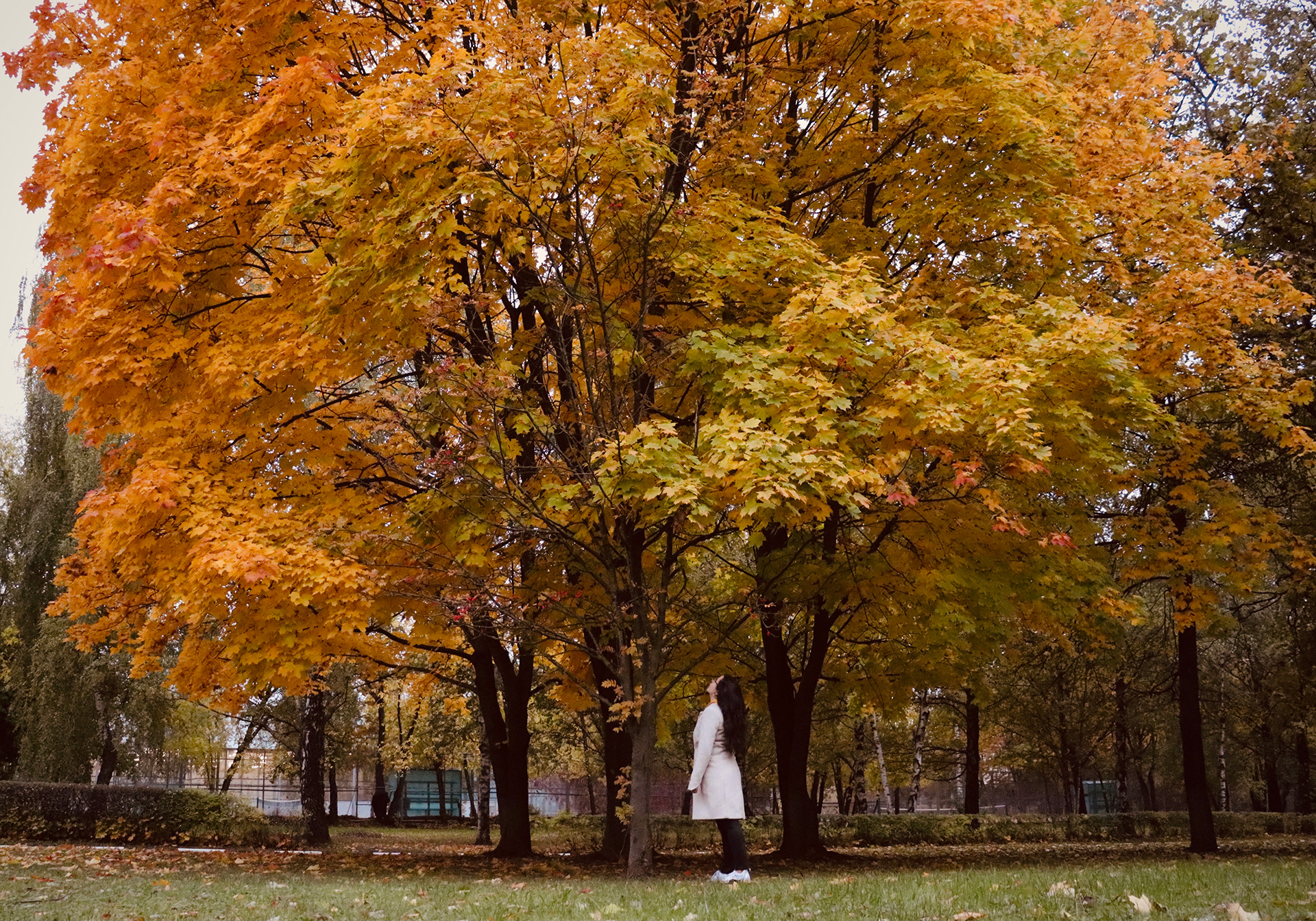Since the first signs of spring, newly forming leaves have actively been growing which helps your tree grow overall. This changes a bit during the later months into the fall season.
When the temperature drops and there is less hours of daylight, the tree begins to conserve the energy it generated in the spring and summer months.
One-way trees save energy for winter is by dropping their leaves. As autumn approaches, shorter days and cooler temperatures signal trees to prepare for winter. The production of chlorophyll slows down and eventually stops, leading to the breakdown of green pigment. As chlorophyll diminishes, other pigments that were previously masked by the dominant green color become visible. These include:
- Carotenoids: these pigments produce yellow orange hues and are present in many plants, including carrots.
- Anthocyanins: these pigments can produce red and purple colors and are formed in response to bright sunlight and excess sugar trapped in the leaves.

Environmental influences can alter color depth. The intensity and vibrancy of fall colors are influenced by weather conditions. Warm, sunny days followed by cool nights enhance the production of anthocyanins, leading to more vivid red and purples. Conversely, cloudy or rainy weather can dull the colors. Once the chlorophyll has been broken down, the tree will take the last of the nutrients left in the leaves and absorb it back into the branches and trunk before each leaf falls to the ground.
Environmental influences can alter color depth. The intensity and vibrancy of fall colors are influenced by weather conditions. Warm, sunny days followed by cool nights enhance the production of anthocyanins, leading to more vivid red and purples. Conversely, cloudy or rainy weather can dull the colors. Once the chlorophyll has been broken down, the tree will take the last of the nutrients left in the leaves and absorb it back into the branches and trunk before each leaf falls to the ground.
In the end, the changing colors of leaves in the fall are a beautiful result of complex biochemical process within trees, driven by environmental cues. As trees prepare for winter, they efficiently recycle nutrients from their leaves, leading to the stunning autumn displays we enjoy each year. The interplay of chlorophyll breakdown, the emergence of other pigments, and the weather conditions all contribute to this seasonal transformation.
Fall is wonderful. Enjoy.
Brenda